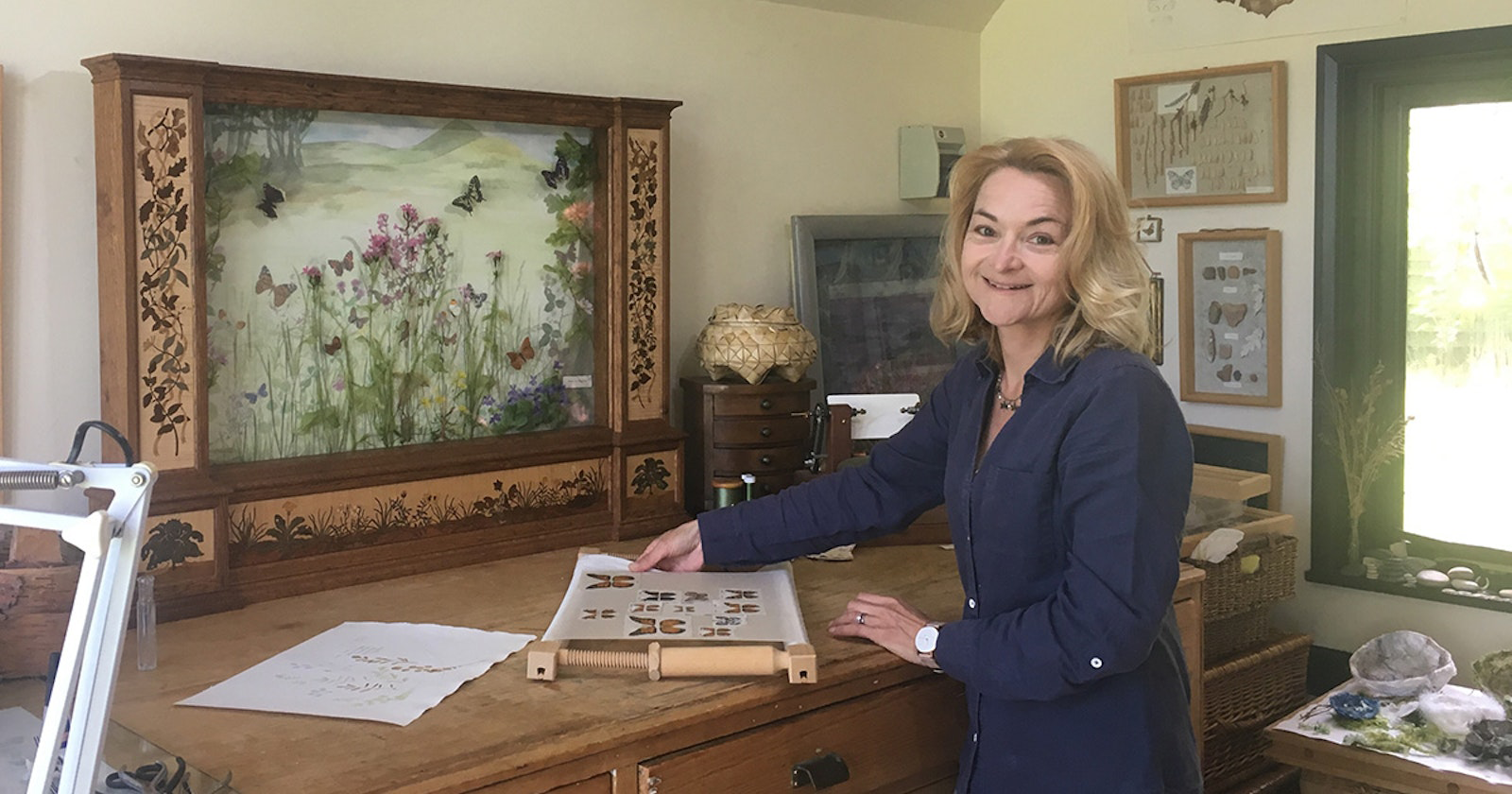Jane E. Hall lives in Dorset in the south of England and is renowned for her exquisite nature-inspired embroidery. I hadn’t spoken to her for quite a while, however, a video call from my home in the Scottish Borders brought us face to face, which allowed Jane to share details about her new project, Psyche’s Cabinet, with me.
Jane’s most recent work has focused on producing delicate, hand-embroidered, three-dimensional renditions of butterflies. There is more to her work than simply stitching exquisite embroideries of these ephemeral beauties though; she immerses herself in the world of butterflies.
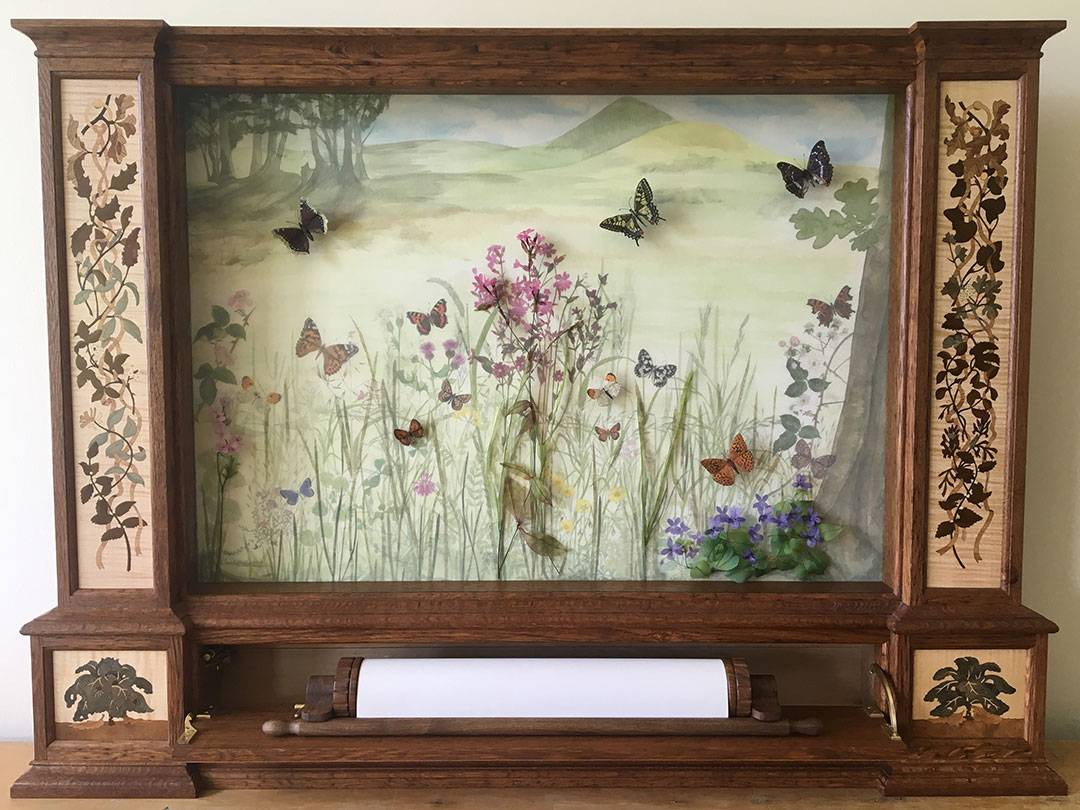 Psyche’s Cabinet
Psyche’s Cabinet
“Butterflies have always inspired me artistically, and I often refer to them as my artistic muse,” Jane tells me. “The creative process begins with close observation of butterflies on the wing, which has led to countless butterfly expeditions. I like to call it ‘studying in the field’ but that makes it sound like work and belies the fun and joy of it.”
Jane explains, “In order to gain an understanding of butterfly habitats and the delicate natural balance necessary to sustain them, I’ve developed a keen interest in the food sources and nectar plants upon which caterpillars and butterflies depend. This led me to create a butterfly haven around my studio. That may sound like a gentle pursuit, but our land had been used for agriculture and heavily fertilized, and the topsoil would grow nothing but pernicious weeds and grass—nothing to whet the appetite of passing butterflies. To allow wild flowers to grow, hundreds of tons of topsoil had to go, which led to months of heavy landscaping. Different types of butterflies favor different plants, and I sowed seeds for wildflowers that would extend an invitation to butterflies and other nectar-loving insects.”
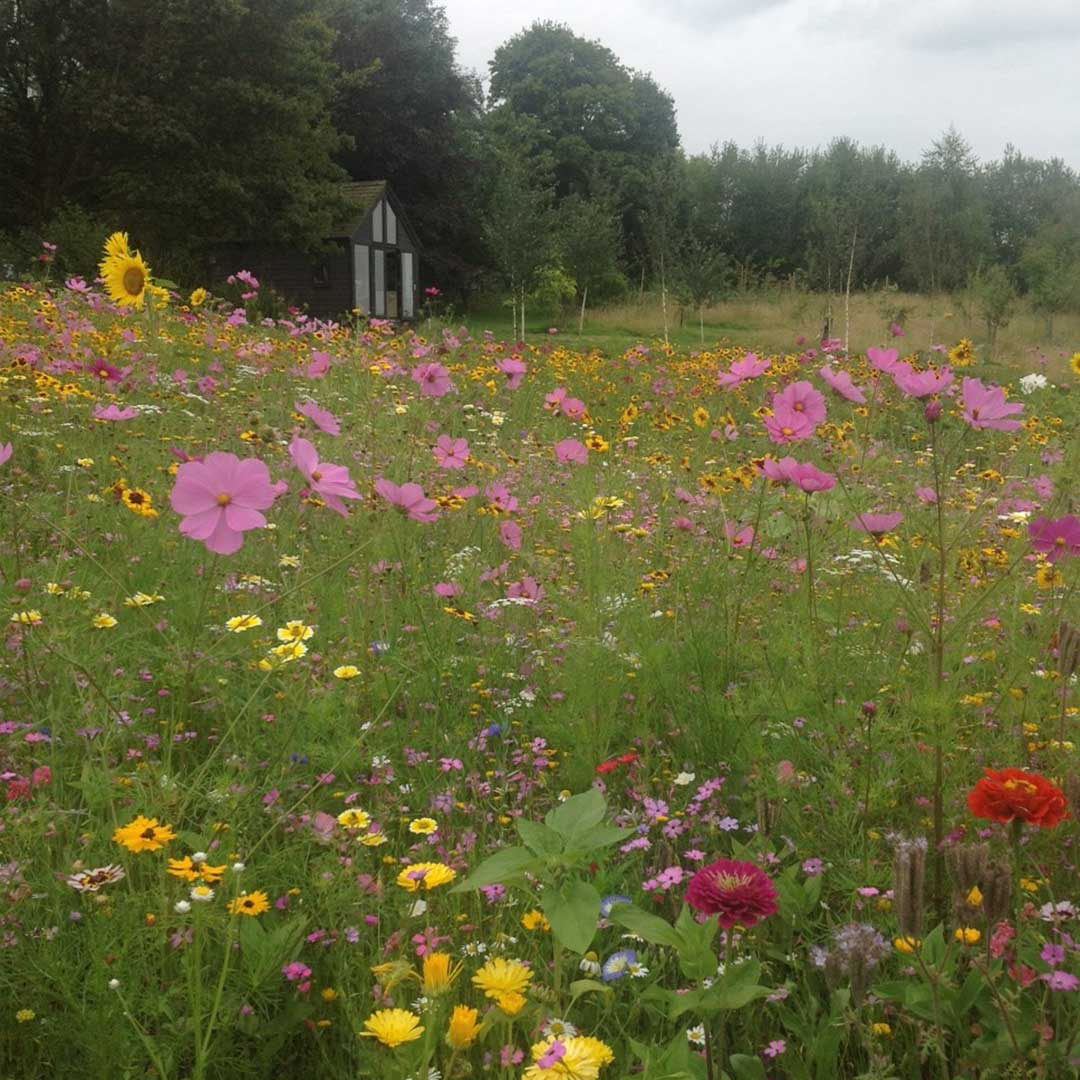 Jane’s garden of wildflowers draws butterflies and other nectar-loving insects.
Jane’s garden of wildflowers draws butterflies and other nectar-loving insects.
Throughout the summer, Jane’s garden is now a swathe of wild flowers, and she finds her inspiration literally outside her door.
“When I step back into my studio from the garden, I make detailed drawings and paintings of the butterflies. Pencil sketches clarify the complex form and pattern of each species, guiding my interpretation of what I observe into stitch. Then, using miniature paintbrushes and luminous silk dyes, which I thicken slightly, I paint the butterfly’s wings onto fine habotai silk fabric. A butterfly’s wing is made up of countess tiny scales, forming pattern and, through light diffraction, color and luster. These individual wing scales are depicted in tiny hand-embroidered stitches, worked with fine handmade needles and hand-plied ten to twenty denier silk threads. I always work with a lit magnifier, as the stitches are so tiny that they can only be worked with the aid of magnification. The edges of the wings are wired to allow them to be shaped. I thread the hair-fine wire into a needle and slip the needle under the stitches at the edge of the wing. The wire is so fine that I can use the same needles that I use for the silk thread.”
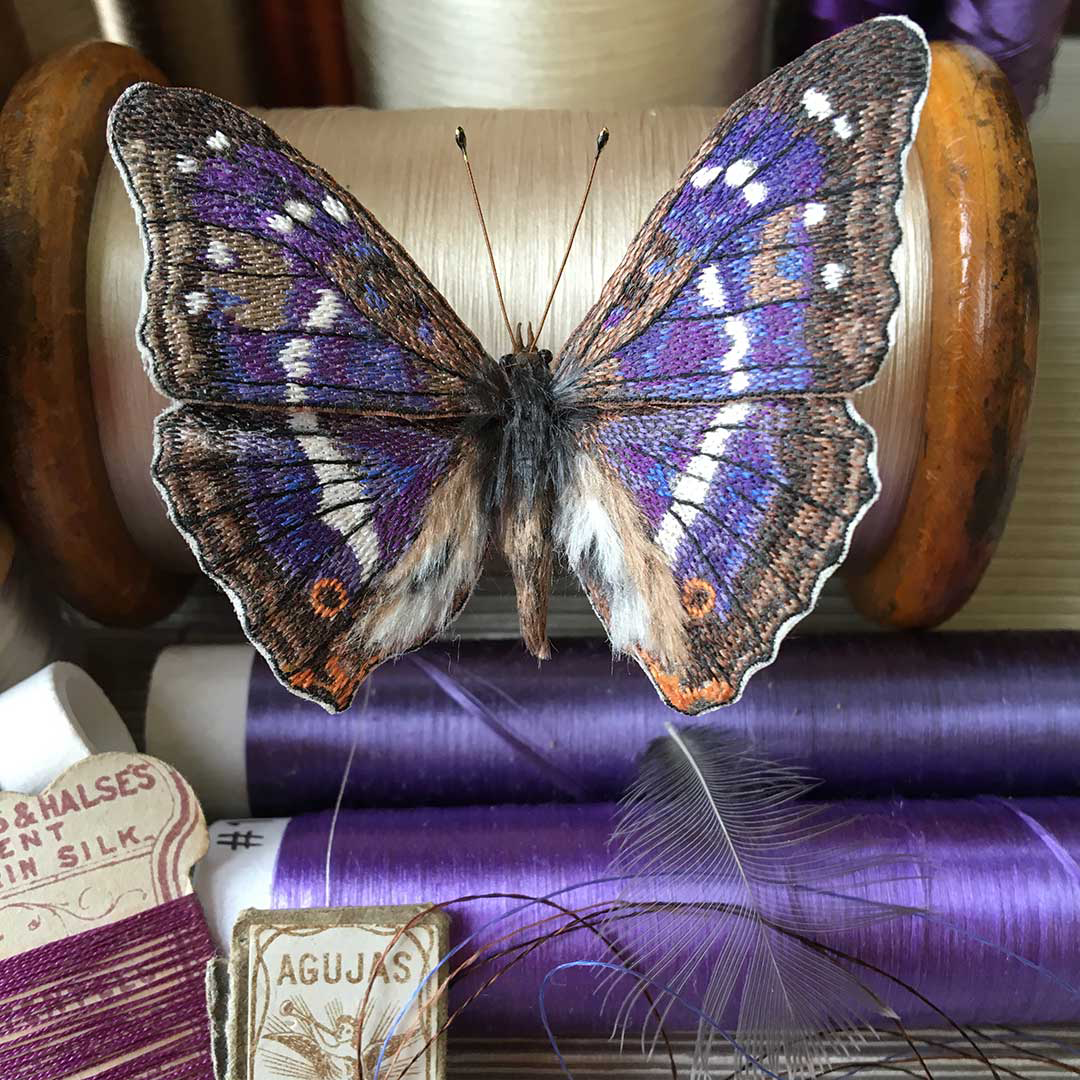 One of Jane’s exquisite embroidered butterflies
One of Jane’s exquisite embroidered butterflies
Jane goes on to say, “I mold the bodies in an air-drying model medium. The hair on the butterflies’ backs is the frayed end of the silk threads that I use. I work the hair in turkey stitch and then tease the ends of the threads to make them fluffy. The antennae are made from silk-wrapped wire topped with a tiny bit of model medium. The work is time consuming; depending upon the size and complexity of the species, it can take up to two months to embroider a single butterfly.”
Psyche’s Cabinet brings together different species of butterflies and their favored habitats. Jane said, “The plants and butterflies in Psyche’s Cabinet are all to scale, but I’ve used artistic license, as the species and flowers depicted wouldn’t appear at the same time. I study the form of the plants in a very meditative way and reproduce them very carefully. Every part of the plant receives the same attention to detail, from the silk-wrapped wire stems to the model medium calyx and the dainty painted silk petals.”
The specially commissioned cabinet in which the butterflies and flowers are displayed is also a work of art. Why is it called Psyche’s Cabinet? “Many ancient civilizations believed that butterflies were symbols of the human soul and were messengers between heaven and earth. In Greek, psyche means soul or spirit,” Jane explained.
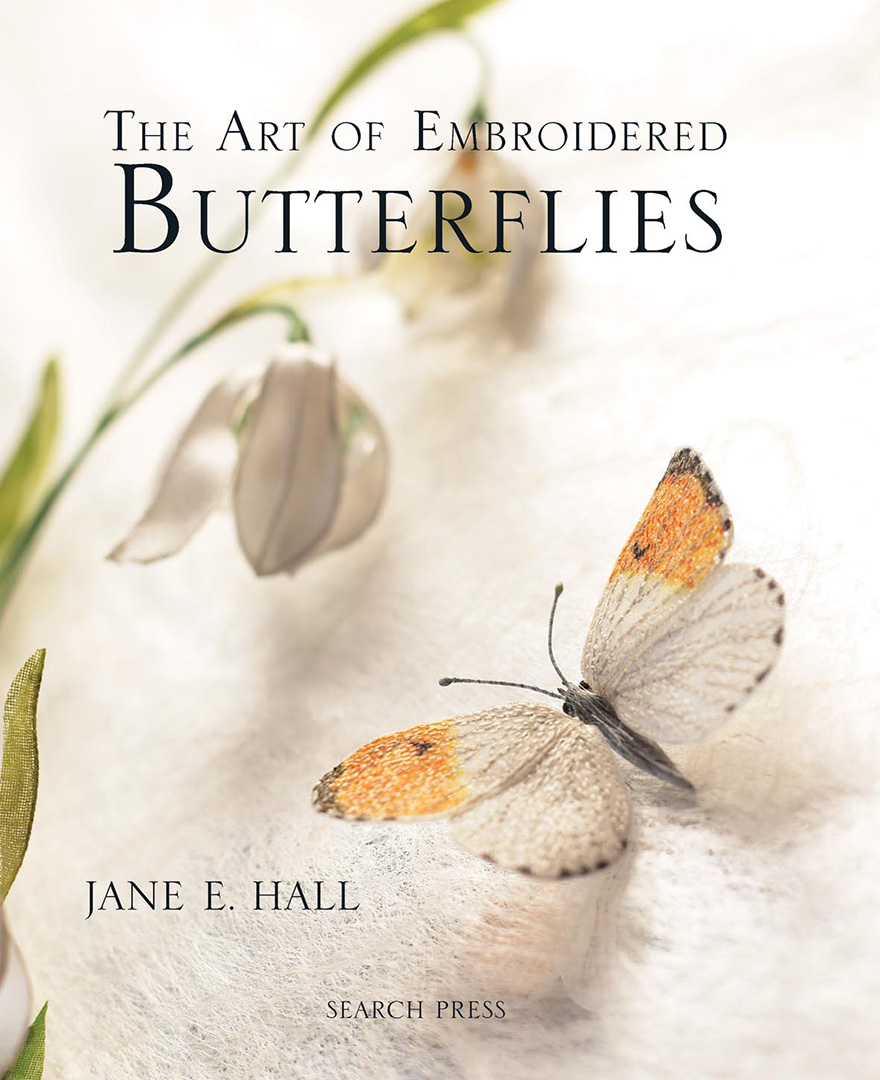 The Art of Embroidered Butterflies
The Art of Embroidered Butterflies
Jane’s sense of wonder as she talks about the glories of butterflies is infectious, and the idea of sowing butterfly-attracting wildflowers for next summer has captured my imagination. Jane’s breathtaking embroideries are surely as awe-inspiring as the real things! You can see more of Jane’s beautiful butterflies in her book, The Art of Embroidered Butterflies.
Learn more about Jane E. Hall and her embroidery projects on her website, www.clothofnature.com.
Interested in working with silk? More articles and projects can be found in the March/April 2007 issue of PieceWork.
Also, remember that if you are an active subscriber to PieceWork magazine, you have unlimited access to previous issues, including March/April 2007. See our help center for the step-by-step process on how to access them.
Kathy Troup, born in the north of England, has lived in Scotland for many years. She edited a U.K. published stitching magazine for seventeen years and continues to write about the subjects she loves.
Originally published November 14, 2018; updated July 8, 2019; updated September 15, 2023.

